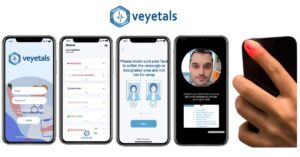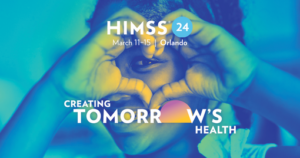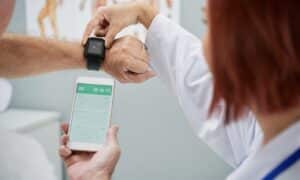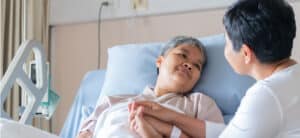Medically Reviewed By: Gideon Kwok
Image Credit: Canva
Key Takeaways
- The Silent Epidemic: While gun violence garners attention, heart disease remains the world’s leading cause of death, responsible for approximately 695,000 American deaths each year.
- Remote Heart Health Assessments: Innovations in wearable technology and telemedicine are revolutionizing heart health monitoring, enabling early detection and cost-effective care.
- The Urgent Need: With cardiovascular diseases on the rise, remote assessments offer a solution for more accessible heart health monitoring, addressing the global challenge of heart disease.
Introduction
The airwaves are filled quite frequently now with heated debate (read: screaming incoherently while looking vaguely attractive) about gun violence and deaths. And it’s true; about 40,000 Americans die every year from gun violence. Everyone is seriously worried. And yet, not that much gets said about the approx 695,000 American deaths from heart disease. Every year. I’m going to let that simmer for a bit while I assemble my double-beef double-cheese burger and large fries. So! YES!! Heart disease remains the most significant global health challenge, claiming more lives annually than any other cause. Traditional heart health assessments invariably require in-person visits to healthcare facilities, and going through testing procedures that, at the extreme end, bring anxiety attacks of their own. Look; been there done that, okay? And then there are always the substantial barriers one faces on account of living in remote or underserved regions. With the phenomenally rapid evolution of technology, however, a new era of remote heart health assessments has dawned up-on us,offering an innovative and accessible solution to this critical issue.
The Emergence of Remote Heart Health Assessments
1. The Imperative for Remote Monitoring
The global population is aging; and the current generation of the near elderly is already not the ones that walked to school, rode bikes in the street or to work, at home-made healthy meals with farm fresh ingredients. That was the previous one; and their hearts were generally in better shape. We now have an increasing prevalence of cardiovascular diseases (CVDs) among the elderly, and this generation, cooped up in tiny urban homes or in remote rural locations (replacing the cart with the 4X4 was never going to work out) is asking for more accessible heart health monitoring systems. Remote assessments offer a viable solution by facilitating medical attention without necessitating physical travel.
2. Technological Breakthroughs
Innovations in wearable devices, mobile health applications, and telemedicine platforms have revolutionized the way heart health is monitored. These technologies enable the remote tracking of vital signs such as heart rate, blood pressure, and even take electrocardiogram (ECG) readings.
3. Statistical Overview
According to the World Health Organization (WHO), CVDs are globally the number one cause of natural death, with an estimated 17.9 million lives lost each year. If these statistics don’t make us sit up and take notice of the urgent need for more effective heart health monitoring and intervention strategies, I don’t know what will. Maybe a prime time talk show on satellite tv?
How Remote Assessments Function
1. Wearable Technology in Heart Health
Wearables like smartwatches and fitness trackers have transformed heart health monitoring. As they track the wearer’s heart rate continuously, and have the ability to use their own algorithms or the ones in the application at the healthcare professional’s premises to detect irregularities, with some even capable of conducting ECGs. For example, the Apple Watch Series 6 and later models offer ECG functionality that has been clinically validated.
2. Telemedicine’s Role
What we’re talking about are Telemedicine platforms; these platforms enable patients to have virtual consultations with healthcare providers. Patients can share data from their wearable devices in real-time, with the healthcare professionals being made aware of any alarming anomalies, allowing them to make their diagnosis in time and manage their patient’s heart condition.
3. Data Analysis and AI Integration
Where you have platforms, algorithms cannot be far behind. In fact, not behind at all. Platforms can’t run without these nifty AI algorithms that play a critical role in interpreting the vast amounts of data generated by those wearable devices. They are the ones that actually identify patterns and anomalies potentially indicative of heart disease, often before any symptoms are perceived by the patient, and alert the doctor into taking preventive or corrective action
Advantages of Remote Heart Health Assessments
1. Enhancing Accessibility and Convenience
The remote assessment approach significantly increases the accessibility of heart health assessments, particularly for individuals in rural or remote areas, as well as those with mobility issues.
2. Promoting Early Detection
Continuous monitoring allows for the early detection of heart-related anomalies, which is critical in preventing severe heart conditions from developing and thus improving patient outcomes.
3. Cost-Effectiveness
By reducing the need for frequent in-person visits and hospitalizations, remote assessments result in a decrease in healthcare costs for both the patient and the healthcare providers.
4. Empowering Patients
Patients demonstrate higher levels of responsibility and adherence to recommended treatment plans and lifestyle changes when they are provided the tools to actively engage with their heart health data, becoming more informed and involved in their healthcare decisions. .
Challenges and Future Considerations
1. Ensuring Data Privacy and Security
The handling of sensitive health data necessitates robust security protocols to ensure patient confidentiality and privacy.
2. Addressing the Digital Divide
Low-income or rural areas are often not able to benefit from these technologies due to limited availability, potentially exacerbating existing health service disparities.
3. Guaranteeing Accuracy and Reliability
The accuracy and reliability of data collected by consumer-grade devices must be rigorously validated for sound medical decision-making.
4. Navigating Regulatory Compliance
All devices and platforms must adhere to stringent healthcare regulations and standards to ensure patient safety and the effectiveness of the technology.
Conclusion
Remote heart health assessments represent a significant advance in the campaign to address the global challenge of heart disease. By harnessing the power of technology, we can make heart health care more accessible, efficient, and effective. Addressing issues related to data privacy, accuracy, and accessibility is crucial to the maximization of the potential of these technologies. As we continue to innovate and refine these systems, remote assessments are going to become increasingly ubiquitous and play a vital role in heart disease prevention and management, potentially saving millions of lives.

Revolutionize Your Wellness Routine: Monitor Vital Signs Anywhere with Veyetals App

Experience the Future of Vitals Monitoring at HIMSS 2024

Understanding the Game-Changing Impact of Heart Rate Monitors on Cardiovascular Care and How You Can Use It
Unlock Your Health: Exploring the Power of Biometric Tracking for Wellness Insight

Revolutionizing ICU Patient Care: The Future of Contactless Monitoring Systems

Revolutionizing Palliative Care: The Role of RPM Tools in Providing End-of-Life Support at Home
MarkiTech has various subsidiaries with products and services targeted towards digital healthcare, telehealth/telemedicine, and a virtual clinic with a laser focus on helping seniors age in place and help their caregivers.
Sensights.ai is a company focused on remote patient monitoring and aging solutions, which utilizes artificial intelligence to track patient’s health and keep a round-the-clock connection between caregivers and patients.
Veyetals also uses rPPG and AI modeling algorithms to measure vitals anytime, anywhere to capture the light reflected by the blood vessels under a patient’s skin.
Lastly, we have now launched our latest Mental Health AI Scribe tool called CliniScripts.com.



